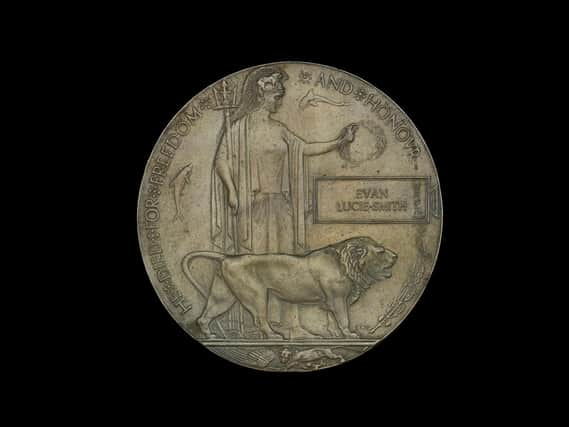How you can help a Warwick museum bring a unique plaque to a remarkable soldier who rewrote black history back to its 'spiritual home'


A museum in Warwick is appealing for help to bring a unique memorial plaque about a remarkable soldier back to its 'spiritual home'.
Lieutenant Euan Lucie-Smith served with the Royal Warwickshire Regiment and has rewritten British black history in World War One.
Advertisement
Hide AdAdvertisement
Hide AdAnd now with the plaque set to go sale at auction on November 12, staff at the Royal Regiment of Fusiliers Museum (Royal Warwickshire), situated on the first floor of St John's House in Warwick, want your help to bid for it so it can go on public display.
People can donate to help the museum's bid (see link below).
Curator Stephanie Bennett said: "This is such an invaluable cultural treasure that it is so important that the museum acquires it so that people can see it now and for future generations.
"The plaque shows the contribution of Commonwealth countries in World War One and tells the story about an aspect of regimental history that should not be forgotten, but that is often hard to tell for a lack of information.
Advertisement
Hide AdAdvertisement
Hide Ad"It also has direct links to today and the continued important role played by soldiers from Commonwealth Countries in the current Regiment, The Fusiliers."
Euan Lucie-Smith is now believed to be the first black officer to be commissioned into the British Army in the First World War and the first to die in the conflict. He was commissioned into the 1st Battalion, the Royal Warwickshire Regiment on September 17, 1914, just six weeks after the outbreak of the war.
He was killed in action, probably shot through the head, on April 25, 1915, at the Second Battle of Ypres. He has no known grave and is commemorated on Panel 2 to 3 of the Ploegsteert Memorial, Belgium.
Previously it had been thought that Walter Tull was the first black officer to be commissioned on May 30,1917, and the first black officer to be killed in action on March 8, 1918. In fact, Euan Lucie-Smith died almost three years before.
Advertisement
Hide AdAdvertisement
Hide AdThe memorial plaque goes on sale at auction on November 12, when the museum will be bidding. If the museum is successful it will mean that people will be able to view the rare object.
The 3rd Viscount Montgomery of Alamein said: "I offer my wholehearted support to the plan to purchase the plaque by the museum, which is clearly the natural home for a unique memorial to one of the regiment’s fallen sons.
"Its purchase would provide a wonderful opportunity to tell the story of the vital role played by soldiers from many Commonwealth
Countries and the sacrifices they made for our freedom. Throughout his career my grandfather (Monty) was incredibly proud of his roots in the Royal Warwickshire Regiment.
Advertisement
Hide AdAdvertisement
Hide Ad"He was also an enthusiastic supporter of the museum which he opened in 1961. He would definitely have approved of and supported the purchase of the memorial plaque."
Euan Lucie-Smith came from a mixed heritage background. He was born at Crossroads, St Andrew, Jamaica, on December 14, 1889. His father was John Barkley Lucie-Smith (the postmaster of Jamaica and a retired major) and his mother Catherine ‘Katie’ Lucie-Smith (nee Peynado Burke).
His father hailed from a line of distinguished white colonial civil servants. His mother was a daughter of the distinguished lawyer and politician Samuel Constantine Burke, who campaigned for Jamaican constitutional reform in the late 19th century and for Jamaica to have greater control over her own affairs.
He came from what we would call a traditional ‘Officer Class’ as he attended two private schools in England; Berkhamsted School and then Eastbourne College. He was commissioned into the Jamaica Artillery Militia on November 10, 1911.
Advertisement
Hide AdAdvertisement
Hide AdTo support the museum to acquire this special and historic memorial plaque please donate online. If the museum is unsuccessful donations will be refunded. Visit http://www.warwickfusiliers.co.uk/pages/pg-35-online_donations/